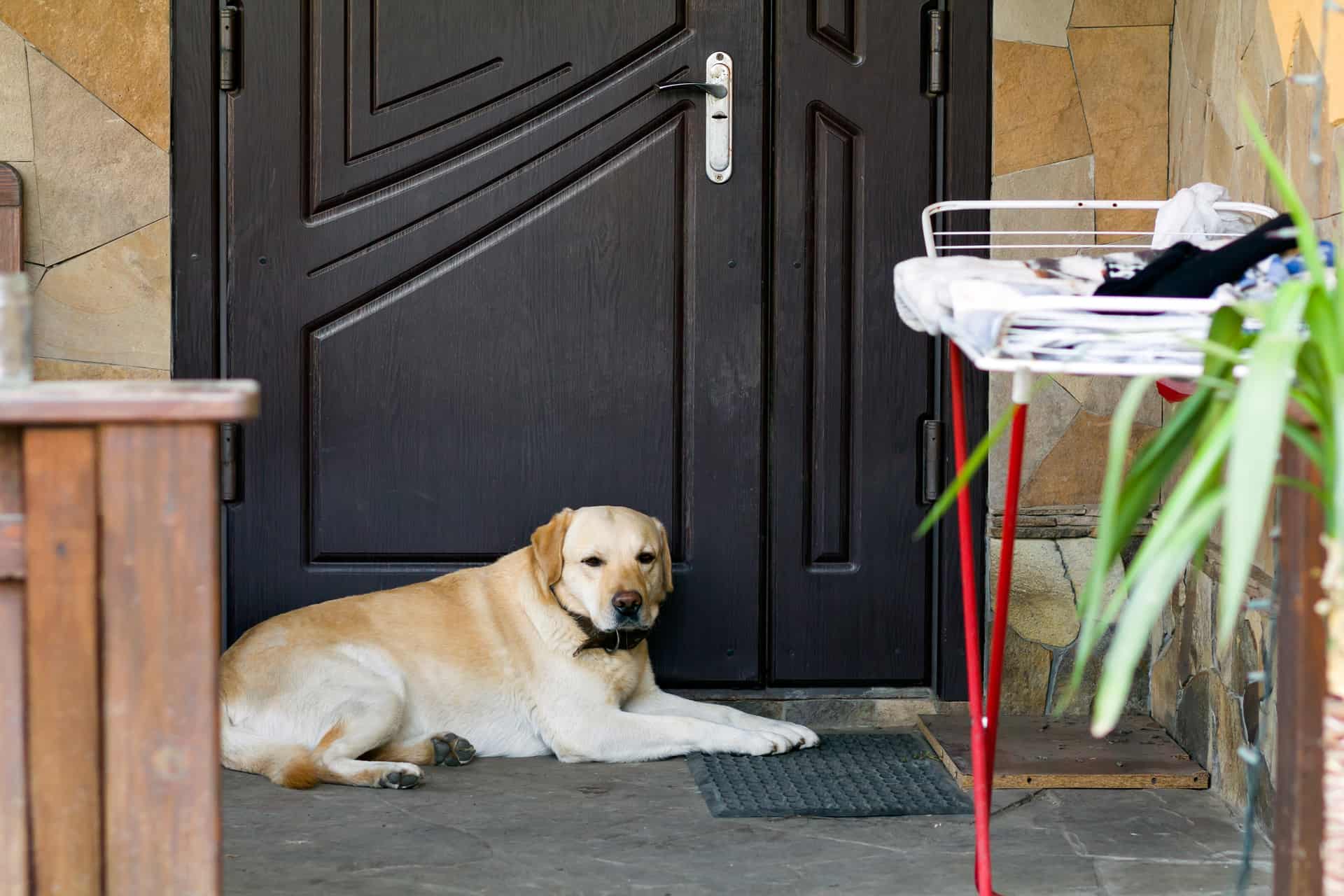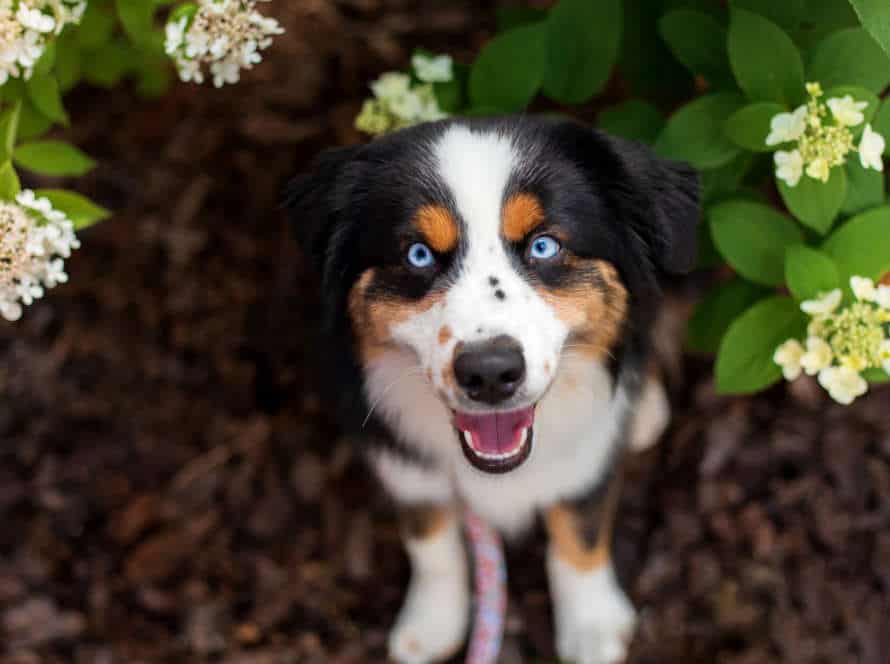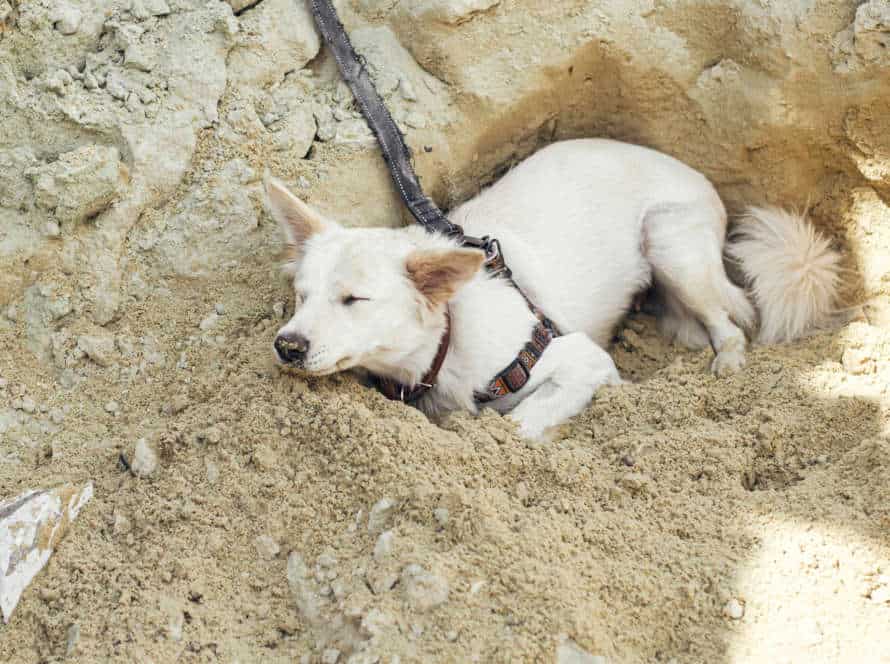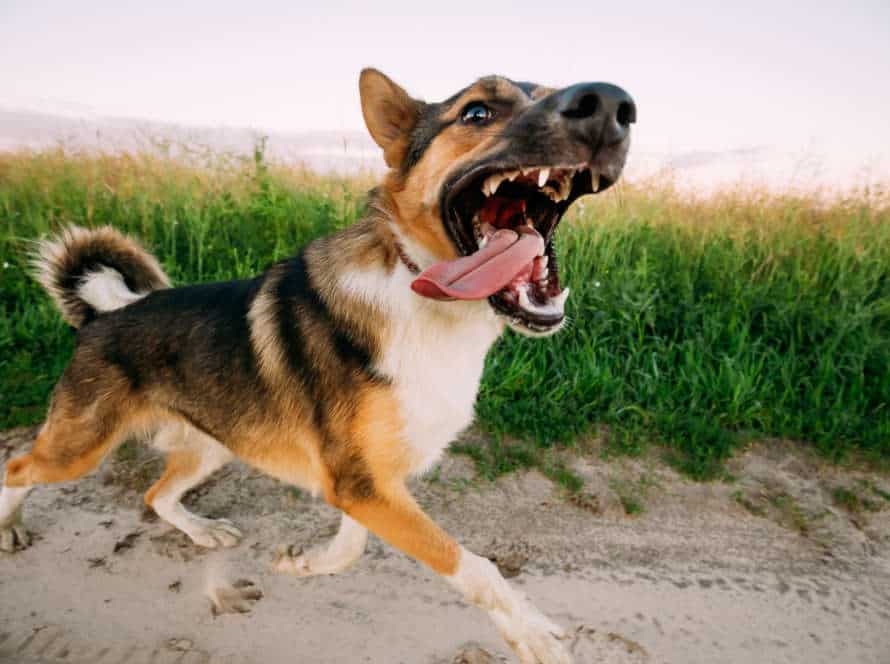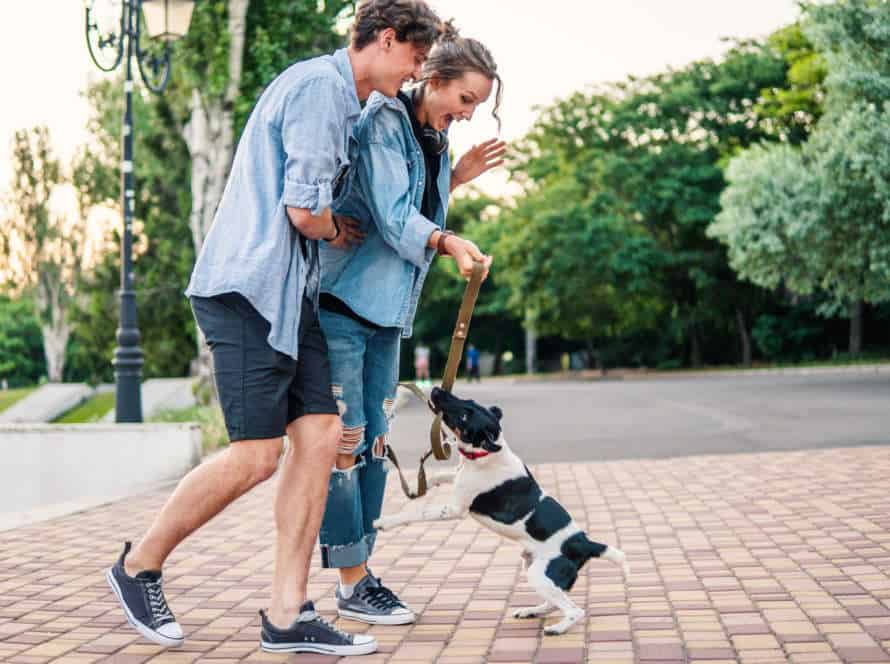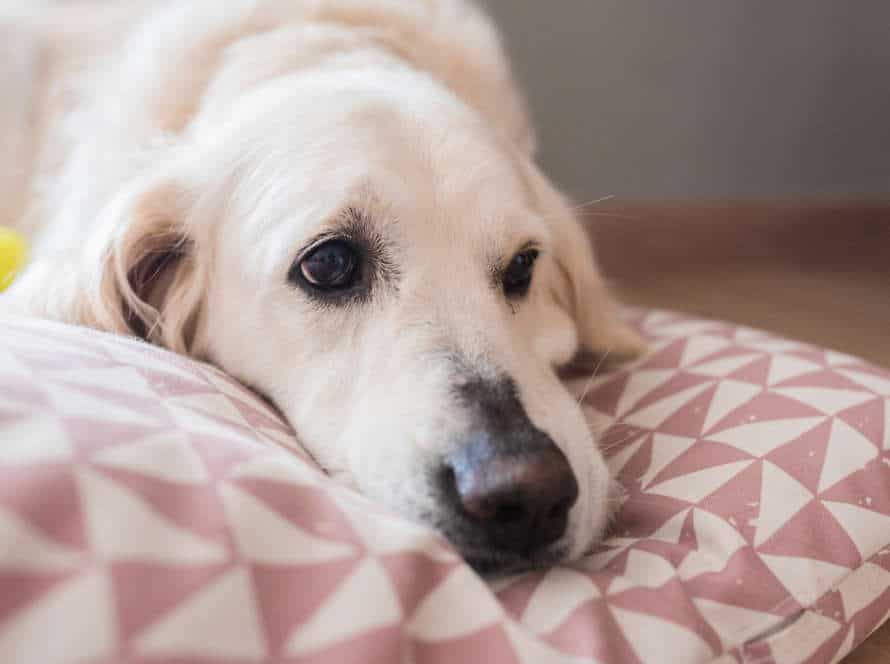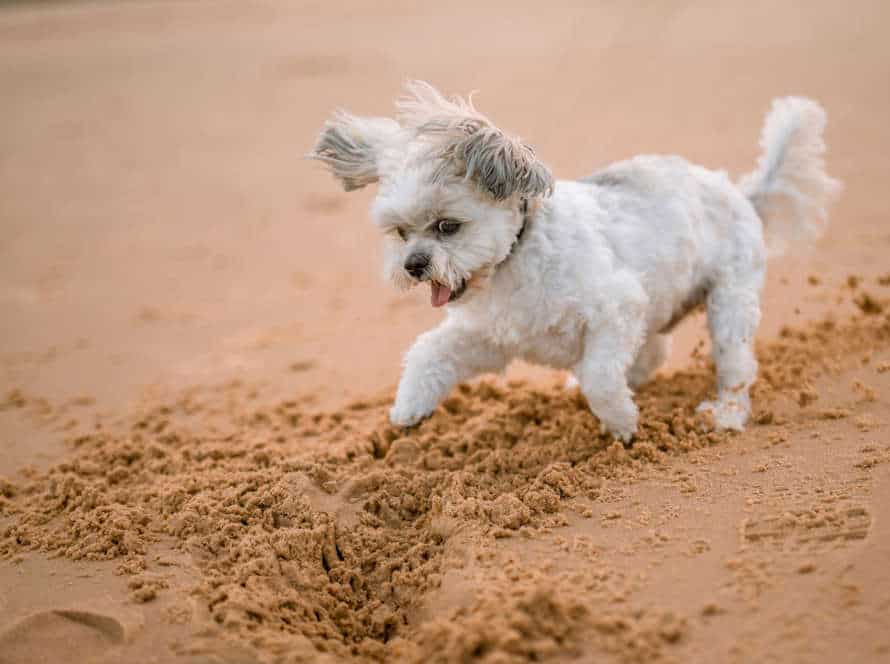Gradual Departures: Easing Your Dog’s Anxiety
Gradual departures can help reduce your pup’s stress when you leave. Separation anxiety is a common issue among pet owners, leading to behaviors like barking, howling, and scratching.
Follow these steps for gradual departures:
- Start with brief separations – just a few minutes.
- Before you go, give your dog enough exercise to tire them out.
- Provide your pup with a special toy or treat just for when you’re away.
- Slowly extend the period of your absence over time.
- Reward your pup when you get home to encourage good behavior.
By using these techniques, you can make leaving easier on your pup. Tip: Keep an eye on your pup’s behavior during exercises and talk to a professional if their anxiety continues.
Understanding Separation Anxiety in Dogs
Dogs are known as a human’s best buddy. Emotional connections build this bond. Anxiety due to being separated is a typical issue for pet owners – it can cause distress for both the dog and its owner. This article explains the signs of separation anxiety and how you can reduce your pet’s stress when alone. Understanding your pup’s fear and making gradual departures can help.
Symptoms of Separation Anxiety
Separation anxiety in dogs is an often seen behavior issue. Symptoms to look for:
- Excessive barking or howling.
- Destructive behaviors like chewing or scratching furniture, doors and windows.
- Pacing or restlessness.
- Escaping attempts.
- House soiling.
- Loss of appetite.
- Constant whining or panting.
If your dog has any of these signs, it’s important to ease their anxiety. Gradual departures can help reduce separation anxiety. Start with leaving your dog alone for a short time and slowly increase the time as they get more used to being by themselves.
Causes of Separation Anxiety
Separation anxiety in dogs can have many causes. From past experiences to environmental factors, the source of the issue needs to be found.
Common causes of separation anxiety include:
- Being abandoned or rehomed.
- Sudden changes in routine.
- Lack of socialization or attention.
- Genetics.
- Trauma or illness.
Figuring out the cause is key to finding the proper treatment. An effective technique is called Gradual Departures, which desensitizes your dog to you leaving and makes it a positive experience. Start by being away for short periods and slowly increase the time until they are comfortable with being alone.
The Importance of Addressing Separation Anxiety
Separation anxiety is common in dogs. It can lead to destructive behavior, too much barking, and even self-harm. It’s important to tackle this problem to give your pup a good life.
Recognizing the signs and causes of separation anxiety in dogs is a must. Dogs with this issue may act up when they’re alone. They may become too close to their owners or show signs of fear and trauma.
To lessen your doggo’s worry, start with short departures. Gradually increase the time you are away. Make your leave a positive experience, like giving them a yummy treat.
Separation anxiety isn’t a bad behavior, but a psychological one. In severe cases, you may need help from a professional dog behaviorist.
Creating a Safe Space for Your Dog
Making a secure place for your pup is essential. You can help them feel more relaxed when you’re not around by giving them a comfy spot to call their own. Let them take the time to adjust. This will help them to be calm when you’re out.
Designating a Comfortable Space
Designing a cozy spot for your pup is key for developing a secure place and calming down anxiousness, especially when leaving gradually.
To make a comfy area for your dog, follow these steps:
- Pick a quiet, low-traffic spot in your home where your dog can relax.
- Build a comfy spot with your pooch’s bed, a blanket, or a crate, to make them feel safe.
- Place your dog’s toys, food, and water in this area to make it their own.
- Encourage your pup to spend time by themselves in this zone, to give them a sense of power over their environment.
Additionally, begin practicing gradual departures by going out for a short time and coming back. Increase the period slowly and reward good behavior – making sure your dog feels safe.
Ensuring Adequate Exercise
Ensuring your pup gets enough exercise is key for their health and happiness. Here are some tips to make sure they stay active:
- Walk twice a day. This helps keep them mentally and physically active.
- Play with them! Fetch, tug-of-war, hide-and-seek. All great ways to get them going.
- Provide mental stimulation. Puzzle toys, Kongs, treat-dispensing balls. All great to keep their minds occupied.
- Consider taking them to the dog park or a training class. Socialization and exercise plus mental stimulation.
Pro Tip: Talk to your vet about the type and amount of exercise that’s right for your dog’s breed, age, and health.
Using Calming Aids and Supplements
A peaceful and tranquil atmosphere is essential for your pup’s physical and mental health. Utilizing calming agents and dietary supplements can be a successful solution to lessen your dog’s uneasiness and advance unwinding in unpleasant circumstances.
Here are some well-known calming agents and supplements for canines:
- Essential oils: Lavender and chamomile are potent essential oils that can help relax your pup. Blend a few drops with coconut oil and rub it on the tips of their ears or neckline.
- CBD oil: CBD oil can assist with reducing stress, tension, and torment in canines. Converse with your vet for the correct portion.
- Thundershirt: A Thundershirt is a close-fitting coat intended to quiet apprehensive pooches by applying gentle pressure to their body.
- Melatonin: Melatonin is a hormone that controls rest and can be useful in controlling your dog’s sleep cycle.
Keep in mind to converse with your vet before giving your pup any supplements or drug. It’s significant to give a tranquil and secure climate for your pup to flourish.
Exercise and Training Techniques to Help with Anxiety
Exercise and training can drastically reduce your dog’s anxiousness. It can give them an outlet to let out energy in a safe environment. Additionally, it gives them the mental stimulation they need.
Here are some of the most effective exercise and training techniques that can help your pup feel more zen:
Positive Reinforcement Training
Positive reinforcement training is a great way to reduce your dog’s anxiety. The Gradual Departures Technique can help with this.
Here’s how to use it:
- Start with a short departure, for example, go outside and come back in, and then increase the length of time you’re away.
- Give your dog treats and praise if they stay calm while you’re gone.
- Stay quiet for a few minutes when you come back and then greet them calmly.
- Do this every day till they’re comfortable with your departures and returns without any anxiety.
The Gradual Departures Technique will promote independence and confidence in your dog and lessen separation anxiety.
Counter-conditioning and Desensitization Techniques
Counter-conditioning and desensitization techniques can help reduce your pup’s anxious feelings.
Start by standing close to them. Praise and reward them for calm behavior.
Then, move a few feet away. Do this repeatedly till you can leave the room for a few seconds without causing distress.
Gradually increase the length & distance of your departures. Reward them for calmness and don’t push their comfort levels.
With patience and consistency, you can help your dog get over their anxiety and build confidence in your departures. Pro tip – Regularly practice these techniques to keep the gains and prevent any anxiety relapse.
Emphasizing Socialization
Socializing your pup is essential to reduce anxiety. It helps them get used to other animals, people, and unfamiliar surroundings.
To ease anxiety, use the Gradual Departures technique. Start by leaving your pup alone for a short time in a safe spot at home.
Then, introduce positive reinforcement like treats or toys for a positive association with being alone.
Gradually increase distance from your pet during regular training exercises. Increase the intervals of being alone for bigger periods of time to make them more immune to departures.
Consistency and patience are key. With persistent training, your four-legged companion’s anxiety levels will improve over time.
Gradually Increasing Time Away from Your Dog
Departing gradually can help ease your pup’s anxiety. Take time to slowly increase the amount of time away. This will ensure your dog is comfortable and relaxed when you’re not there.
Here are some tips for gradually increasing time away:
- Start small: Begin with short absences of only a few minutes at first.
- Lengthen Absences in Small Increments: Gradually increase the time away in small increments such as 5-15 minutes depending on how well your pet is handling the absences.
- Ignore your Pup: Leave and return without spending too much time greeting your dog.
- Keep your Departure Calm: While leaving, ensure you are not conveying anxiety to your pup. Use a calm tone and body language when saying goodbye.
- Offer a Special Treat: Before leaving, give your pup a treat that they only get when you are gone, such as a toy or chew.
- Keep your Pet Entertained: Leave your pup with activities or puzzles to keep them occupied while you’re away.
Implementing a Gradual Departure Schedule
Leaving your pup alone for long can bring anxiety and stress. A gradual departure schedule can help to reduce these tensions. Here’s how:
- Start small. Leave your dog for just a few minutes, then gradually increase the time.
- Make it enjoyable. Give your pooch a treat or favorite toy when you go.
- Create a routine. Dogs love routine. Make it the same every time you leave and come back.
- Stay chilled. Dogs take on your attitude. Stay calm and reassuring.
By increasing the time away gradually, your pup will learn you’ll always return. This makes absences less stressful for both you and your pup.
Lengthening Time Away Slowly
Leaving your four-legged friend behind can be daunting. Especially if they suffer from separation anxiety. To lessen their stress, gradually increase the time you spend away from them. Here’s how:
- Start with a short period away, like a quick trip to the store.
- Once your pup is content with that amount of time, add a few minutes.
- They’ll be more at ease knowing you’ll come back.
- Be patient. Keep arrivals and departures low-key.
- Introduce new toys or treats for distraction.
With time and commitment, your pup will gain independence and confidence.
Recognizing and Addressing Regression
It’s common for doggies to show regression in their behavior, when their owners leave them alone after being together a lot during the pandemic. Knowing and handling regression is important to help your pup adjust to any changes in their routine.
To prevent regression and ease separation anxiety, increase time away from your dog gradually. Start with a few minutes, then add on more time.
Also try:
- Encouraging independent play with toys
- Treats and positive reinforcement for desirable behavior
- A safe and comfy space for your pup while you’re away
- Calming aids like pheromone diffusers or music
If regression persists, talk to a vet or dog trainer for more help. Remember: Consistency is key! Stick to a routine and be patient with progress.
Addressing Severe Cases of Anxiety
In some cases, it can help an anxious dog to get used to their environment by leaving gradually. This means increasing the time away, as well as the distance. However, if your pup is severely anxious and needs you around, it is hard to do. Gradual departures can help them to trust you and feel more secure. Let’s look at ways to tackle serious anxiety.
Seeking Professional Help
If you’re dealing with anxiety, pro help is essential. A therapist or mental health expert can aid you in finding the source of your anxiety, teaching you coping strategies, and creating a plan to manage your symptoms.
For dogs with anxiety, ‘gradual departures‘ is a technique used to ease their worries. Here is what to do:
- Prepare their favorite toys/treats before leaving.
- Start with short absences – 5-10 minutes.
- Gradually increase time away.
- Repeat daily to help them overcome separation anxiety.
Return home quickly after the time is up and keep the greeting low-key.
Medications for Dogs with Severe Anxiety
Dogs with severe anxiety can be tough to manage. But, there are medications that can help! Commonly prescribed meds include:
- Fluoxetine, an antidepressant that increases serotonin levels;
- Clomipramine, an antidepressant for separation anxiety, phobias, & other anxious behaviors;
- Alprazolam, a benzodiazepine that enhances the effects of GABA in the brain, promoting relaxation & reducing anxiety.
Gradual departures are also a great way to ease your pup’s anxiety. Start with just a few minutes alone & increase the duration over time. Remember: Always ask your vet before giving your dog any medication!
Alternative Therapies to Consider
When it comes to treating severe anxiety, there are alternatives to traditional treatments. Gradual departure is one of them. Here’s the deal:
- Train your pup to link your departure with something positive, like treats or toys.
- Start by leaving for short periods, and then increase the time.
- Create a relaxing atmosphere with classical music, pheromone sprays, or a comfy bed.
- Reward them for being calm when you come back.
Gradual departure can help reduce anxiety in dogs, especially if used with other therapies like meds or behavioral training.
Maintaining a Positive Environment for Your Dog
It’s a must to maintain a positive atmosphere for your pup! This is especially vital when they’re feeling a bit anxious due to alterations in their environment or routine. To make the transition smoother, slowly introduce changes. Here are some tips to help you out:
Creating Consistency in Daily Routines
Creating consistency in daily routines is key for your pup’s well-being. Establishing a routine can reduce stress, promote good behaviour, and make the bond between you and your dog even stronger. Gradual departures can help ease anxiety. Here’s how:
- Start by desensitizing your dog to your absences. Increase the time away over the course of a few weeks.
- Show your dog appreciation with treats or toys when they stay calm.
- Ensure your pet has a comfy and safe spot while you’re away.
- Provide mental and physical stimulation. Exercise, puzzle toys, or interactive games are all great options.
- Maintain a consistent schedule for meals, walks, and playtime. This will lower stress and encourage good behaviour.
Scheduling Regular Play Time and Bonding Sessions
Schedule regular playtime and bonding with your pup! This is key for a positive environment.
When you go out, depart gradually. Make sure to spend dedicated time with your pup each day. You could play with their favorite toys or just hang out together. To help them get used to being alone, start leaving for short periods. Increase the time steadily until they’re happy alone for longer periods.
Train them to view your departure as a good thing. Give them treats or toys when you leave. Gradual departures and positive reinforcement will make them feel safe even when you’re away.
Monitoring Your Dog’s Health and Welfare
It’s key to check your pup’s welfare and health for a happy life. Easing their stress when you’re not home is an important part. Here are some tips on how to do it:
- Gradual Departures: Leave the house for short periods and increase the time away gradually. Don’t be dramatic when leaving or coming back, or it might make your dog more anxious.
- Safe Space: Make a safe, comfy area for your dog to chill in while you’re gone, like a crate or specific room. This brings security and minimizes stress.
- Positive Reinforcement: Give your pup treats and compliments when they stay relaxed during your departure and return. This will help motivate good behavior and create trust.
- Regular Vet Checkups: Schedule regular vet visits to monitor your dog’s physical and mental health and take care of any issues before they get worse.
Frequently Asked Questions
Q: What causes anxiety in dogs?
A: There are many reasons why a dog may experience anxiety, including separation from their owner, changes in routine or environment, past trauma, and genetic predisposition.
Q: How can I tell if my dog is experiencing anxiety?
A: Signs of anxiety in dogs can include excessive barking, destructive behavior, loss of appetite, changes in sleep patterns, and seeking constant attention or reassurance.
Q: What are gradual departures and how can they help my dog’s anxiety?
A: Gradual departures involve slowly increasing the amount of time a dog is left alone, with the goal of reducing their anxiety and building their confidence. This can be done through a variety of techniques, such as crate training or desensitization to departure cues.
Q: How do I start implementing gradual departures with my dog?
A: It’s important to start slowly and gradually increase the amount of time your dog is left alone. You can also provide them with comfort items, such as a favorite toy or blanket, and practice departures without making a big fuss or saying goodbye.
Q: Can medication help my dog’s anxiety?
A: In some cases, medication may be prescribed to help manage a dog’s anxiety. However, it’s important to consult with a veterinarian and only use medication as a last resort or in conjunction with behavioral modification techniques.
Q: How long does it take for gradual departures to help my dog’s anxiety?
A: The timeline for seeing improvements in a dog’s anxiety can vary depending on the severity of their condition and individual factors. It’s important to be patient and consistent with gradual departures, and to seek professional help if necessary.

